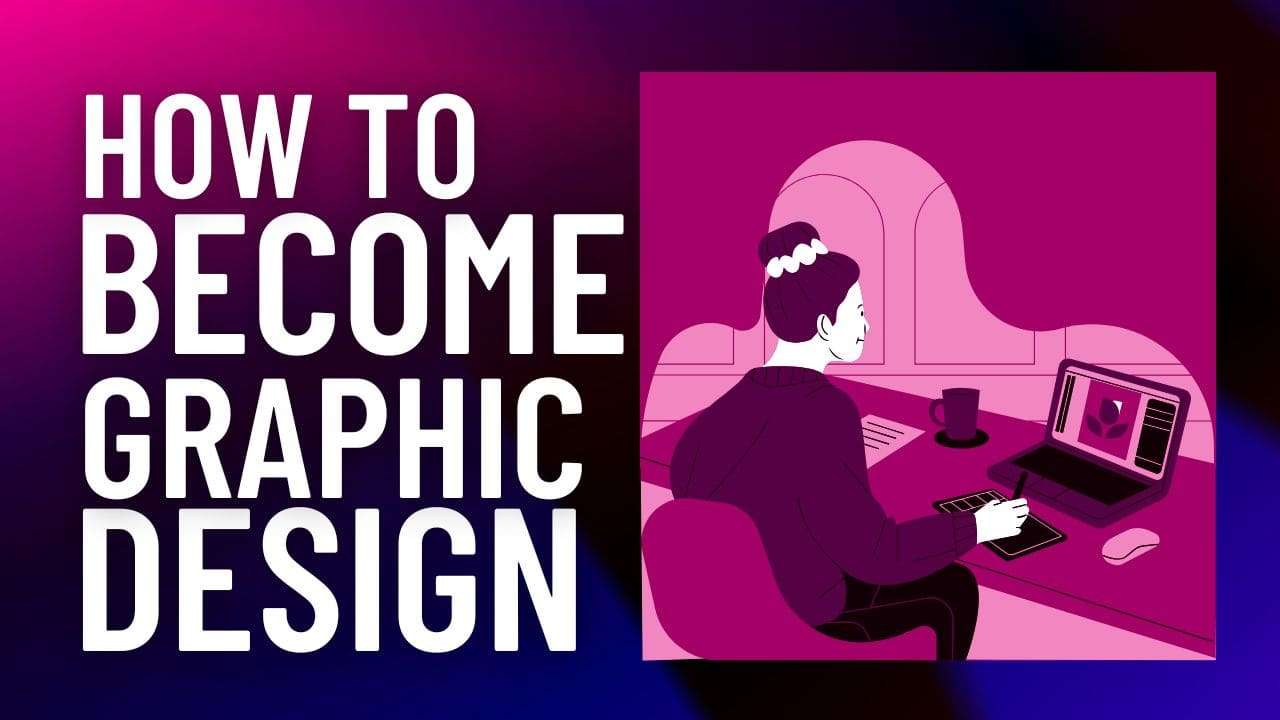Graphic design is a creative profession in high demand that combines art and technology. A career in graphic design can be rewarding and high-paying if you want to create great ads, beautiful web pages and memorable logos. If you are asking how to become a graphic designer you will need to read this guide to help you understand the skills required, tools needed, and career paths available in this field.
Graphic Designers: What They Do And How You Can Become One
Graphic designers develop visual information to convey messages They operate in a range of fields from advertising to publishing to digital media to branding. Their aim is to communicate messages through typography, imagery, color, and layout while engaging with audiences.
They work on graphic design projects including:
- Branding and logo design
- Website and mobile app design
- Marketing materials (such as brochures, posters, and social media graphics)
- Packaging design
- Editorial design (both for magazines, books, newspapers)
Skills That Every Graphic Designer Should Have
Skills required to be a successful graphic designer A graphic designer should have a combination of technical and soft skills. Some of the key competencies needed are:
Technical Skills
- Typography: Knowledge of fonts, spacing, and readability is important.
- Color Theory: Understanding how to implement colors to convey feelings and make designs stand out.
- IMAGE LAYOUT and COMPOSITION Organising visual elements in a way that brings clarity and impact.
- Tools: Adobe Photoshop, Illustrator, InDesign (tried-and-tested designed tools)
- UI/UX Design: Understanding website fundamentals and app design.
- Illustration and Digital ArtCustom graphics and vector illustrations.
Soft Skills
- Graphic Design: Everything You Need To Know?
- Interpersonal Relations: Expressing ideas properly to your clients, stakeholders, and team members.
- Time Management — meeting deadlines across different projects.
- Design: Working the magic to craft the products in creation.
- Attention to detail — Ensuring every aspect of a design is perfect.
Training and Education Options
There isn’t one way to become a graphic designer, but some typical educational paths are:
Formal Education
- Graphic Design Bachelor’s Degree: A lot of designers have a university or art school degree, so they get all of the training on design principles and the software as well as building a portfolio.
- Associate Degree or Diploma: These programs are shorter and focus more on hands-on design skills.
Self-Education & Online Courses
- Websites: There are various courses for graphic design software and principles on websites such as Coursera, Udemy, or Skillshare.
- This is just a random example from YouTube itself, YouTube also offers free channels on this particular topic by industry experts on various design techniques.
- Books & Blogs: Engaging with design related books or blogs could enrich your knowledge on various trends and best practices.
Essential Tools for Graphic Designers
Professional designs require the right tools, and you have those on-demand. Here are some essential ones:
Software
- Adobe Photoshop: For editing and altering images.
- Adobe Illustrator: To create logos and vector graphics
- Adobe InDesign is for layout design, which would be for brochures and magazines.
- Figma/Sketch: UI/UX design and prototyping.
- Canva: A quick design tool—Free online design tool
Hardware
- A High Resolution Monitor: Having a high-resolution monitor for accurate color representation
- A graphics tablet: a graphics tablet is often used for digital illustration and precision work.
- A Machine: Ideally, a powerful system with higher RAM and a powerful GPU helps speed up the processing time.
Building a Portfolio
- Having an exceptional portfolio is key to making yourself stand out and getting new clients or products. Here’s how you can build one:
- Feature Different Types of Work: Display multiple styles and project types (brand identity, website, print, etc.).
- Showcase Your Best Works: Quality over quantity.
- Work on Personal Projects: If you are not working on any real project, create mock projects to showcase your skills.
- Build A Personal Brand: This is about developing a voice unique to you and maintaining a uniformity that makes your portfolio recognizable.
Build a Portfolio on Behance & Dribbble: These platforms allow for greater visibility for your work, and help you build connections with potential clients.
- Paraphrase : Career and Job Titles in Graphic Design
- Choosing a graphic design career offers variety. Here are some popular roles:
- Freelance Designer: Take on projects on a per-job basis for a variety of clients.
- In-House Designer: Work on a company’s internal creative team.
- Agency Designer: Design projects in an agency, where you will typically handle multiple client projects.
- Such as a UI/UX designer, designing of digital interfaces
- Brand Designer: Specializes in corporate identity and branding
- Motion Graphics Designer: Create animated visuals and video graphics.
How to Get Hired as a Graphic Designer
When you’ve developed your skills and a portfolio, it’s time to get work. Here’s how:
- Internships: Get experience and make industry connections.
- Build an Online Portfolio: Have a personal site as well as social media accounts.
- Network: Expand your connections by going to industry meet-ups, joining local design communities, etc.
- Job Platforms: There are many sites for freelance and even job.
- Interview Preparation: Also, get used to talking about your portfolio and design process during job interviews.
Conclusion
To sum up, you need dedication, creativity and continuous learning to become a graphic designer. Where professionals can establish a great career in this area by developing fundamental skills, mastering industrial tools, creating a great portfolio, and even more! Demand for skillful designers is consistently on the rise, whether you get employed by a company or are a freelancer, making it a great career option. So take a step today and make designing your profession!



